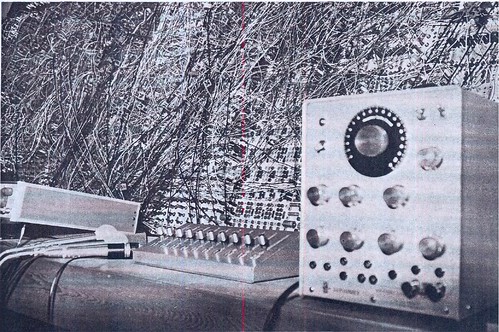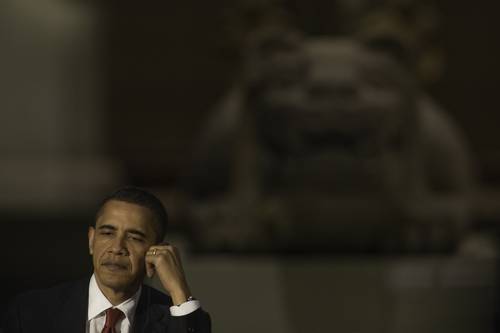
By Alfredo Jalife-Rahme, English translation by Gerardo Alejos.
Just like the monetarist bailouts endeavored by the Paulson-Bernanke couple during the twilight of [George W.] Bush’s second term were a failure, the neoliberal bailouts implemented by the Summers-Geithner-Bernanke triplets during the first 100 days of [Barack] Obama’s term seem to have been unsuccessful. And Obama himself seems to have been kidnapped by the Wall Street bankers/beggars, according to Simon Johnson (former chief economist of the International Monetary Fund in 2007 and 2008, and current professor at MIT’s Sloan School of Management) in a chronicle of the “quiet coup” undertaken by US bankers, who “captured” the US government and are currently “blocking recovery” (The Atlantic Monthly, May 2009).
Twenty days after the dysfunctional G-20 summit held in London on April 2, the only summit participant who insists on living completely away from the very delicate reality is [Mexico’s President Felipe] Calderon –delusionally sheltered in his team of the “best economists of the world”–, while the out-of-sight, controversial and misogynous Larry Summers, the main “economic” counselor of his –actual– hostage Obama, admits that there’s a risky uncertainty sailing over the US skies (The Daily Telegraph, 4/20/09). In this regard, we strongly recommend the critique of the G-20 summit that Immanuel Wallerstein published on his website (commentary no. 255, 4/15/09 ).
European think tank LEAP/Europe 2020 correctly forecasted three years ago the present global tsunami which is barely starting, or rather, which is only beginning to enter its second phase –since we still haven’t seen the collapse of the ominous derivatives known as credit default swaps, valued in over 60 trillion dollars, more than the annual global GDP–. LEAP/Europe 2020 has conscientiously earned its position as an invaluable reference for “realist” economic analysis, and its work is miles ahead from the prevarications and chimeras propagated by most of the Anglo-Saxon media –and the risible local media caricatures that lack judgment and discernment–.
This column was perhaps the first one in the Americas to discover the oracular virtues of LEAP/Europe 2020, which are based on hard data, so we have been commenting its monthly findings for a rather long time. For instance, last year we ventured to reproduce its daring forecast of the breakdown of the dollar, which would occur in the summer of this year.
In my recent visit to Paris, just before the London summit, I was surprised to find an “open letter” from LEAP/Europe 2020 to the G-20, signed by the think tank’s Director of Studies Franck Biancheri, published as a one-page spread in The Financial Times -the foremost mouthpiece of global neoliberalism- (“Last chance before global political dislocation”, 3/24/09).
Biancheri raised an unavoidable dilemma to the G-20: “a 3- to 5-year crisis or a decade-at-least long crisis”, given that the “engine” of the global economy can’t be repaired; therefore it’s imperative to build a new engine based on three basic recommendations that should be implemented before this summer:
1) the creation of a new international reserve currency;
2) setting up bank control schemes, and
3) an IMF (sic) assessment of the banking systems of the US, Great Britain and Switzerland (i.e. [the countries that foster the financial policies that spurred the crisis, such as] bank secrecy, the gambling of financial derivatives in the invisible books of tax havens and the immunity of bankers).
To focus on the imminent breakdown of the dollar, we’ll center on the first recommendation that Biancheri characterizes as “very simple” and that, in our judgment, could lead to a world war for it undermines the last bastion of the US power (Bajo la Lupa, 4/12/09): “the US dollar and economy are no longer capable of supporting the current global economic, financial and monetary order”, and this problem lies “at the heart” of the global crisis and its “consequences in terms of mass unemployment and collapsing living standards.”
LEAP/Europe 2020 champions [once again] the creation of “an international reserve currency (which could be called the «global») based on a basket of currencies corresponding to the world’s largest economies, i.e. US dollar, euro, yen, yuan, khaleeji (common currency of oil-producing Gulf states, to be launched in January 2010), ruble, real..., managed by a «World Monetary Institute» whose board will reflect the respective weight of the economies whose currencies comprise the «global».”
Biancheri’s letter ominously concludes that, if this recommendation is not implemented, “today’s international system will not survive this summer,” because each country will behave based on “the «every man for himself» approach”, and those countries or institutions that intend to maintain their status quo will “lose any capacity” to “significantly influence the future shape of this new global monetary system,” given the “political dislocation.”
With this somber background, LEAP/Europe 2020, in its GEAB bulletin no. 34 (4/16/09), enunciates the relentless onward motion of the “Western system breakdown” and mocks the “dollar trap” in which China appears to have fallen –which it supposedly can’t break free from–, according to the notorious assertions of Paul Krugman (New York Times, 4/02/09). China’s plethoric reserves, of course, amount to 2 trillion dollars, and 70% of those reserves are in dollars and the remaining 30% in euros. But is China trapped with no way out?
According to LEAP/Europe 2020, China, like any other prisoner, dreams of escaping its dollar-centric prison, which will occur “by the end of the summer of 2009”, when the US will declare the bankruptcy of the dollar given its defaulting on its debt. Then, each country will act according to its self-interests with the purpose of prevailing in the international system.
China is getting prepared for this ominous contingency. In the first quarter of this year, the growth of its foreign reserves invested in US Treasury –and other US– bonds (i.e. in dollars) significantly slowed down (Chinese Central Bank, April 2009).
Beyond the dire internal divisions in the G-20 and the “pusillanimity” of the “Eurozone leaders”, LEAP/Europe 2020 “anticipates the different forms a US default will take at the end of summer 2009, a US default which can no longer be concealed from this April (most taxes are collected in April in the US) onward.”
Regarding the manipulation of the price of gold, the European think tank explains that “the perspective of a US default this summer is becoming clearer as public debt is now completely out of control with skyrocketing expenses (+41%) and collapsing tax revenues (-28%).” At the federal, state, county and town levels, “tax revenues are vanishing, suffocating (sic) the whole country with spiraling debts that no one can control anymore, not even Washington.” However, the most interesting aspect herein is the reaction of the US citizens, who have begun to rise up against the use of their tax dollars to bail out the speculative blunders of the blood-sucking, parasitical bankers.
- Originally published in the column Bajo la Lupa of the newspaper La Jornada, April 22, 2009, Mexico City.









